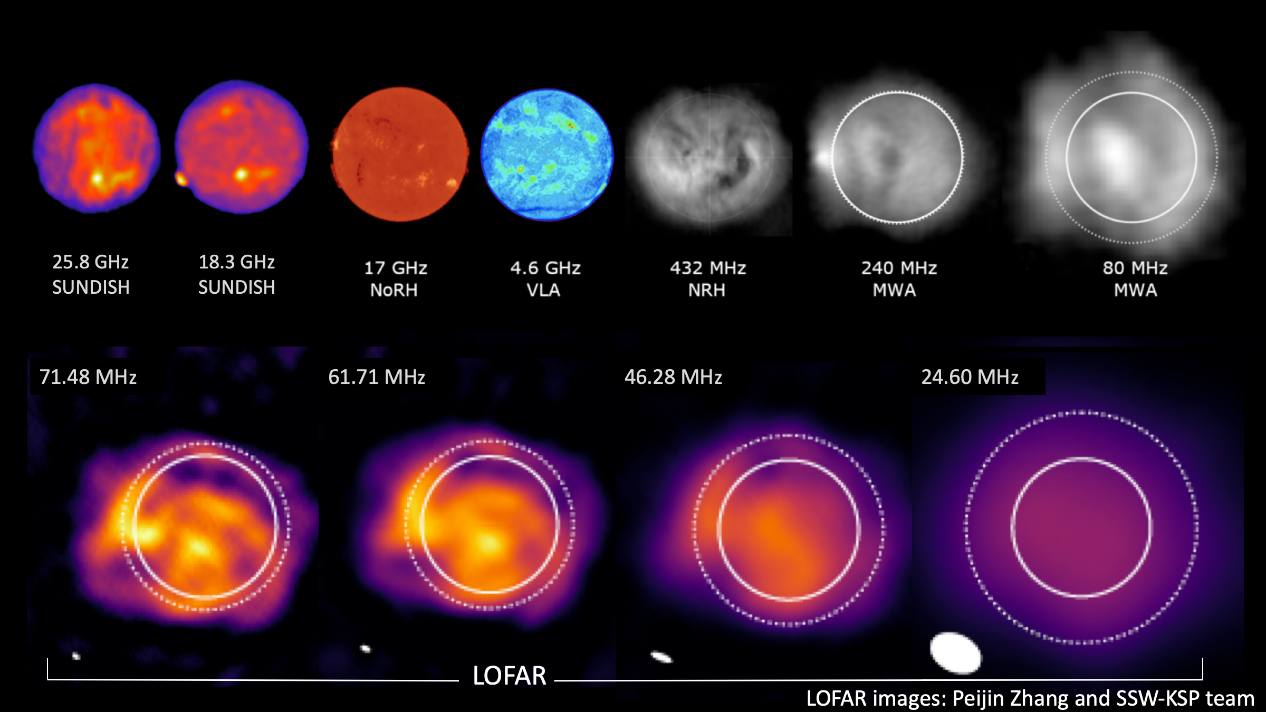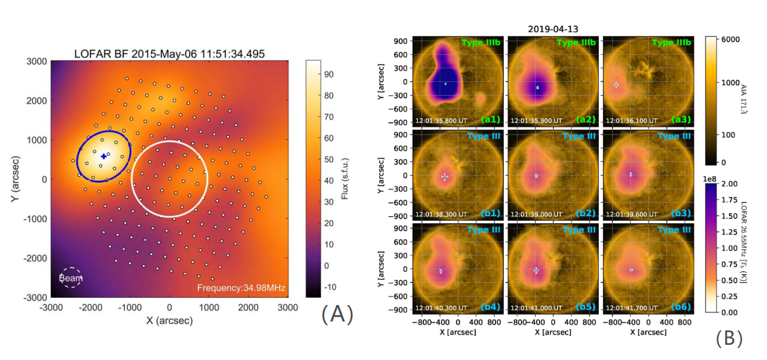Solar Radio Emission¶
The sun is a radio active star sitting 'relatively-near' to us, which gave us the chance to observe the radio emission at very high resolution (compared to other stars).
Low Frequency Quiet Sun¶
With the Low Frequency Array LOFAR, we can observe the radio emission at low frequency (20-80 MHz) of the quiet sun. With LOFAR core+remote stations, integral 2.45 hours during a quiet pierod time of the Sun, we produced the high fidelity image of the quiet Sun.

Also we can derive the temperature spectrum of the quiet Sun, indicating lower than modeled thermal bremsstrahlung emission spectrum, detailed in the paper. QuietSunTb
Electron beam properties in solar atmosphere from Radio imaging¶
There are two imaging modes of LOFAR solar observation to explore the beam electron properties: beamformed imaging (panel A of Figure 2) and interferometry imaging (panel B of Figure 2).

Beamformed imaging has higher time resolution and frequency resolution, I use this mode to locate the burst centroid and capture the evolution of electron beams within a type III radio burst, and quantified the velocity dispersion of the electron beam as an important contribution for the duration of the type III radio burst [Zhang et al 2019]. Interferometric imaging has a higher spatial resolution, which can help resolve the precise brightness temperature distribution, with interferometric imaging in decameter wavelength for a type IIIb radio burst, we found significantly different behavior for the fundamental wave and harmonic wave which may imply strong propagation effects for the solar radio bursts.